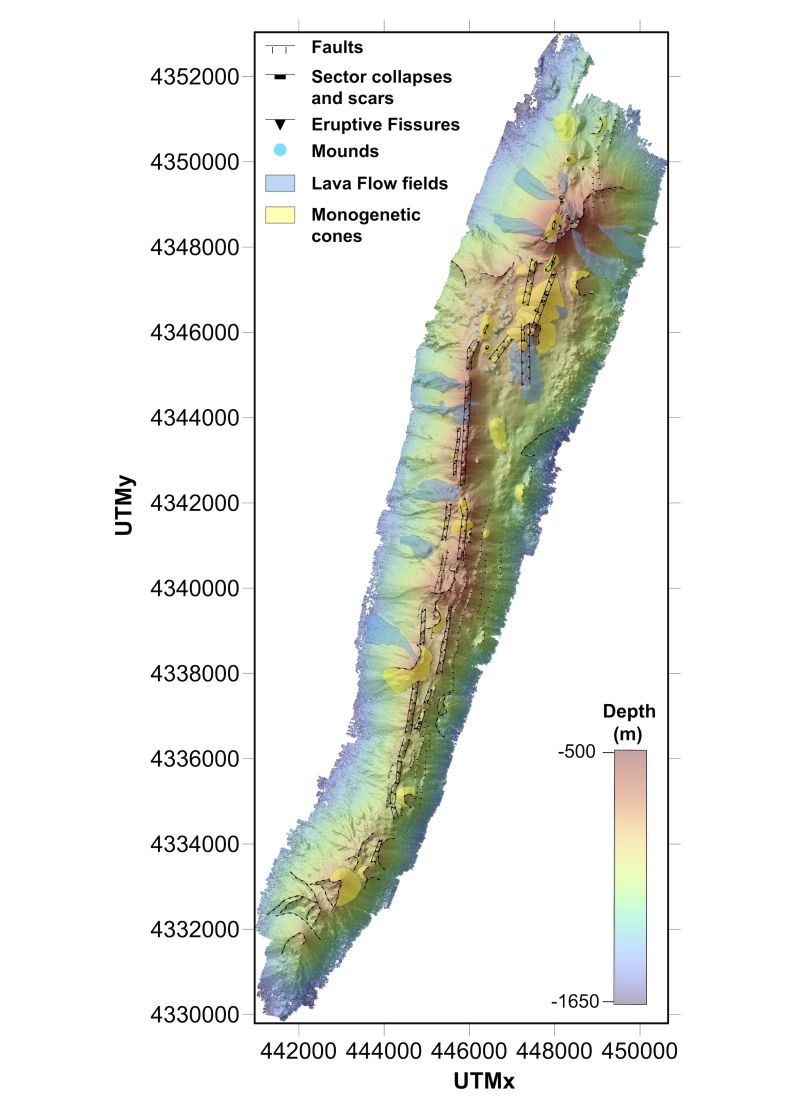The formation and growth mechanisms of young back-arc spreading ridges from high-resolution bathymetry: The Marsili Seamount (Tyrrhenian Sea, Italy)
Nicotra E., Passaro S., Ventura G.
Abstract
The formation and growth mechanisms of Mid-Ocean Ridges (MOR) are relatively well known, whereas those of back-arc spreading ridges are comparatively less known because geophysical, geochemical, and morphological data are scarce and of low density. Here we present a high-resolution bathymetry of the Marsili Seamount (MS; 1Ma ? 3 ka), which represents the inflated spreading ridge of the 2Ma old Marsili back-arc basin associated to the subduction of the Ionian Sea below the Calabrian Arc and Tyrrhenian Sea. MS is 70 km long, 30 km wide, and its height reaches about 3000 m from surrounding seafloor. Our new digital bathymetric model has a 5 m grid cell size resolution and covers the MS bathymetry from ?1670 mbsl to the top at ?491 mbsl. We conduct morphometric and morphological analyses of the bathymetry and recognize landforms due to volcanic, tectonic, hydrothermal and gravity processes. MS consists of volcanoes related to fissural and central-type activity, this latter located at the northern and southern tips of the main dike swarms. Dike swarms represent the surface expression of different ridge segments whose strikes are controlled by the larger scale back-arc spreading processes and by the local occurrence of an active hydrothermal field. This latter develops in a flat area between two partly overlapping ridge segments where historical volcanism and extensional processes concentrate. Such ridges represent the embryonic stage of the formation of transform-like faults. Central volcanoes, the northern of which is characterized by a caldera, form at the tips of MS because the decrease in width of the major volcanic fissures promotes vent localization associated with the formation of sill-like reservoirs from which central-type vents may develop. Gravity processes affecting the MS flanks are due to shallow seafloor sliding. Caldera collapses affecting the northernmost central-type polygenic volcano must be included in the evaluation of the hazard related to potential tsunami. Inward dipping faults characterize the MS eastern flank suggesting a moderately asymmetric growth of the spreading ridge possibly associated with the eastward opening of the Marsili back-arc. The Marsili back-arc spreading rate is similar to those of MOR slow spreading ridges. However, the MS morphology resembles that of fast spreading ridges. These two features also characterize more extended back-arc spreading ridges (e.g. the Mariana in Western Pacific). We conclude that, independently from the spatial scale, the increase in the ridge accretion rate is related to the progressive addition of a subduction-related component to a pure spreading mantle source.

